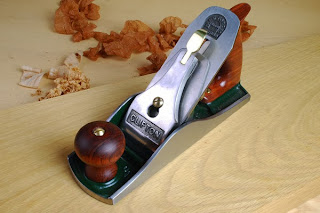
Five years ago my wife gave me a beautiful smoothing plane for Christmas. At the time I already had a smoother, but it had no sentimental significance and I had no qualms whatsoever about selling it to make room for my beautiful new one. That handplane is the one that I use to put the final surface on a piece of timber, to create the surfaces by which my skill and craftsmanship will be judged. It is one of my favourite possessions and five years on I still think about her every time I pick it up.
The economist in me has been trying to work out what it was that made that particular gift as memorable and special as the brand new BMX bike that my parents gave me when I was six. The results of that thought process have been distilled into the following five tips for successful Christmas gift shopping:
Tip One
The best gifts are things that the recipient will use, treasure and adore; whatever the item may be, it should always be of excellent quality.
Tip Two
Make a list or, even better, a pinterest board, of things that you would like to receive as gifts. This is especially important with woodworking tools, as quite often the person buying it for you doesn't have the first clue what they are looking at.
Tip Three
Don't be afraid to ask for expensive things, relatives often prefer to club together and buy you one really awesome present instead of each getting you something smaller.
Tip Four
When shopping for others, separate the processes of deciding what the present will be and purchasing it. (bang goes my nomination for predatory retailer of the year)
Tip Five
Give yourself plenty of time; driving past a crammed supermarket on Christmas eve when your presents are all safely wrapped up is pure schadenfreude!















